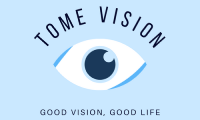Corneal Conditions and Their Effects on Vision
The cornea is a transparent outer layer of the eye that plays a crucial role in vision. It acts as a protective barrier and helps to focus light entering the eye onto the retina. However, various corneal conditions can affect its transparency and shape, leading to significant vision problems. In this article, we will explore two common corneal conditions, their effects on vision, and potential treatment options.
1. Corneal Dystrophies:
Corneal dystrophies are a group of genetic disorders that cause abnormal changes in the cornea, leading to impaired vision. These conditions typically affect both eyes symmetrically and can worsen over time. Two common corneal dystrophies are:
– Fuchs’ Endothelial Dystrophy: This dystrophy affects the innermost layer of the cornea called the endothelium. As the disease progresses, the endothelium becomes less efficient at removing excess fluid from the cornea, causing swelling and clouding. This results in decreased visual acuity, glare sensitivity, and even painful episodes.
– Keratoconus: Keratoconus involves the progressive thinning and bulging of the cornea, creating a cone-shaped surface instead of its normal dome shape. This abnormal shape leads to visual distortion, astigmatism, and even scarring. Patients may experience blurred or double vision, often requiring frequent changes in corrective eyewear prescriptions.
To address these corneal dystrophies, treatment options may range from conservative approaches to surgical interventions. In mild cases, prescription eyeglasses or contact lenses can correct the refractive error caused by corneal irregularities. However, as the conditions progress, more advanced interventions may be needed, such as:
– Corneal cross-linking: This non-invasive procedure involves applying a photosensitizing solution to the cornea and exposing it to ultraviolet light. These combined actions help strengthen the corneal tissue, slow down the progression of keratoconus, and improve visual outcomes.
– Corneal transplantation: In severe cases, where the cornea’s structure is significantly compromised, a corneal transplant may be necessary. During this surgical procedure, the damaged cornea is replaced with a healthy donor cornea. Modern techniques such as Descemet’s stripping endothelial keratoplasty (DSEK) and Descemet’s membrane endothelial keratoplasty (DMEK) offer quicker recovery times and better visual outcomes compared to traditional full-thickness transplants.
2. Corneal Infections:
Corneal infections can occur due to various factors, such as bacteria, viruses, fungi, or parasites. These infections can cause significant damage to the cornea, resulting in vision loss if left untreated. Some common corneal infections include:
– Bacterial Keratitis: Bacterial keratitis is often caused by poor contact lens hygiene or corneal abrasions. Symptoms may include eye redness, pain, sensitivity to light, and blurred vision. Prompt treatment with antibiotics is necessary to prevent further corneal damage.
– Herpes Simplex Keratitis: This viral infection is caused by the herpes simplex virus, which can remain dormant in the body and reactivate during periods of stress or illness. It can lead to recurring corneal inflammation, scarring, and vision loss. Antiviral medications can help manage the virus and reduce the risk of complications.
– Fungal Keratitis: Fungal keratitis is relatively rare but can occur following a corneal injury, particularly in humid environments. Symptoms may include eye redness, severe pain, blurred vision, and discharge. Treatment often involves the use of antifungal medications and, in severe cases, surgical intervention to remove the infected tissue.
If a corneal infection is suspected, seeking immediate medical attention is crucial to prevent vision-threatening complications. Treatment may involve the use of topical or oral medications, depending on the type and severity of the infection.
In conclusion, corneal conditions can significantly impact vision and quality of life. Corneal dystrophies such as Fuchs’ Endothelial Dystrophy and keratoconus can cause visual impairments that range from mild to severe. Prompt diagnosis and appropriate interventions, such as corneal cross-linking or transplantation, can help manage these conditions effectively. Corneal infections, on the other hand, can lead to vision loss if not treated promptly. Proper hygiene, early detection, and targeted antimicrobial therapies are essential to prevent long-term corneal damage. Regular eye exams and timely medical attention are crucial for maintaining healthy corneas and preserving clear vision.
